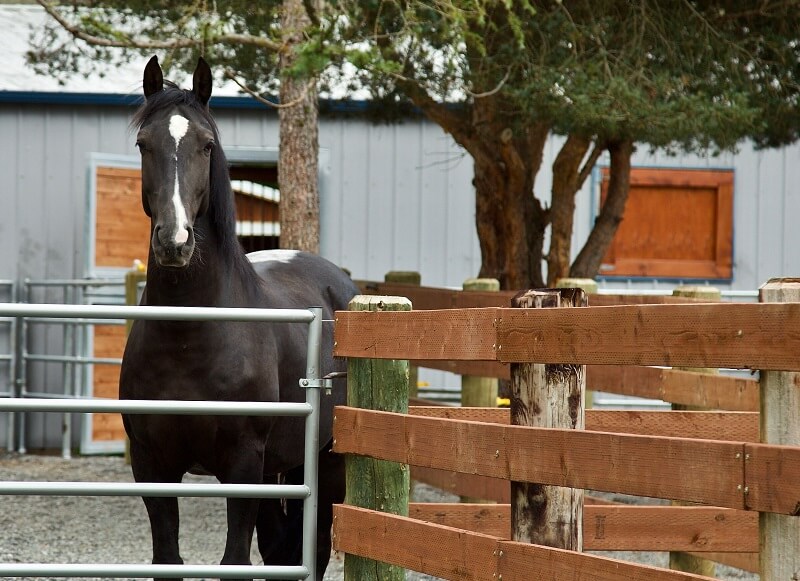Make Life with Horses Easier with these Barn and Farm Features
By Kim Roe
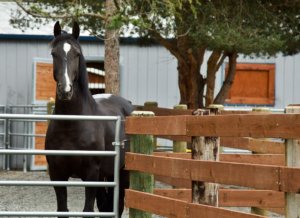
A friend of mine is a serious Pacific Northwest dressage rider. For years, she kept her horses in nice run-in sheds in her backyard. Every winter she struggled to carry warm water out for them to drink, pushed the wheelbarrow through the mud and ice, and tacked-up in a north wind that blew the saddle pad off her horse’s back before she could get the saddle on.
One winter she broke her wrist in a fall, and while trying to apply polo wraps to her horse with her cast-laden arm, the wind whipped the end of the wrap around and spooked her horse. No one got hurt, but it was a close call…and that was it! She decided to build a barn that now keeps both her and her horses comfortable and safe through the worst storms the Northwest can muster up.
The Pacific Northwest is not an easy place to keep horses. Sure, our summers are sublime, but winters pose problems that our more southern friends can’t imagine. Short, dark days, torrential rains that produce deep mud, windstorms, snow, slush, and ice make life with horses here challenging.
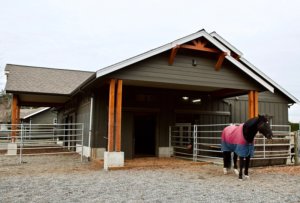
Financial realities keep us struggling along sometimes, but what if you could wave a magic wand and make a place of perfection for man and beast? What would your barn and farm include?
Here’s a list of the top amenities that reduce labor and keep horses and humans comfortable on Northwest horse farms.
Safe, Solid Fences
This is a top priority. Too often horses are corralled with flimsy fencing that blows down in a storm or panicked horses run through. Permanent, strong fencing keeps your peace of mind and your ponies safe.
Gates and More Gates
Gates that go from stall to gravel paddocks to small fields and then to big fields are a wonderful time saver and safety feature. They allow correct pasture management and make it easy to restrict grass time for the fatties too.
Not having to lead horses into and out of their stalls and paddocks saves labor and increases safety. Leading fractious horses into and out of the barn in the dark, rain, or snow can be extremely dangerous. Also, giving horses access to their shelters at all times of the day and night make for happy horses year-round.
No Mud (and No Ice)
The initial outlay for all-weather paddock footing seems daunting, but it’s a must-have. Gravel, properly installed, is the best choice in most cases. Hog fuel has its advantages in some situations. What you choose is a decision that should be researched thoroughly. Even the best-drained ground will need some kind of footing if horses are contained on it. And where there’s water, there’s ice; well-drained footing prevents an icy slippery mess when all that mud freezes.
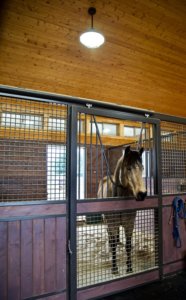
Horses’ Access to Each Other – Sight and Touch
Horses who can see and touch one another will be happier and calmer. You’ll have fewer vices and fewer health problems which saves money in the long run. The ability for stalled horses to touch each other is a basic need for equines.
Manure Storage Close to Horses
Pushing a wheelbarrow through the mud into a pile of wet, toxic waste is one of the worst things horse ownership has to offer. Situate manure storage bins close to the horses and make them weather-proof. Cement blocks and pad with a cover is best.
Let There be Light
The more lights the better. Flipping a switch that lets you clean paddocks and stalls after dark and really see your horse at night is more necessity than luxury. You can find solar lights that work fairly well in a pinch too.
Barns designed to let in lots of natural light save money on electricity and make for a more pleasant environment for horses and humans alike.
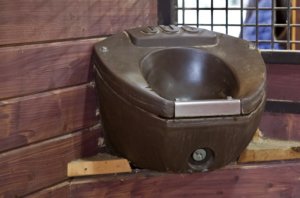
Freeze-Proof and Automatic Water
Hauling water to horses in freezing weather is back-breaking work. Horses prefer fresh, ice-free water. Having freeze-proof automatic waterers is a sublime amenity to your horse farm. At the very least, a freeze-proof faucet close to the horses is a necessity.
Grooming Areas Adjacent to Tack Rooms
This seems like a no-brainer: having your tack room close to where you will be tacking up, in a safe and sheltered spot. Even better, situate the tack room next to where you park your trailer so loading and unloading can be done easily, quickly, and out of the weather.

A Place for Your Farrier and Vet
Make life easier on hard-working equine professionals. Situate your barn aisle or grooming area so they can back their truck into a sheltered, well-lit area to do their work. An overhead door that can be rolled down and shut against the elements makes it even cozier.
Warm Baths
A safe place to wash your horse with warm water is a godsend for horse and human. Warm water means cleaning tack can be done easily in the barn too. Add a heater and you’ll never want to leave the barn.
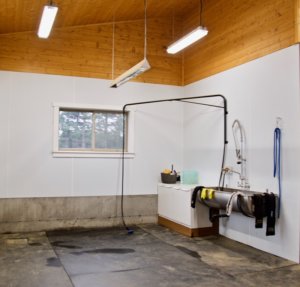
Luxury Items
Consider having cameras installed so you can check your horses from your cell phone; heated bathrooms with flush toilets; a washer and dryer; and a refrigerator/freezer for ice, medicine, perishable horse treats, and a cold drink in the summer.
Horses are wonderful, fun creatures that enrich our lives; caring for them shouldn’t ruin the pleasure. Thoughtful design of your barn and farm, with top priorities of comfort and safety both for your horses and yourself, keeps the chores manageable. And fewer chores means more time for the good stuff—like riding!
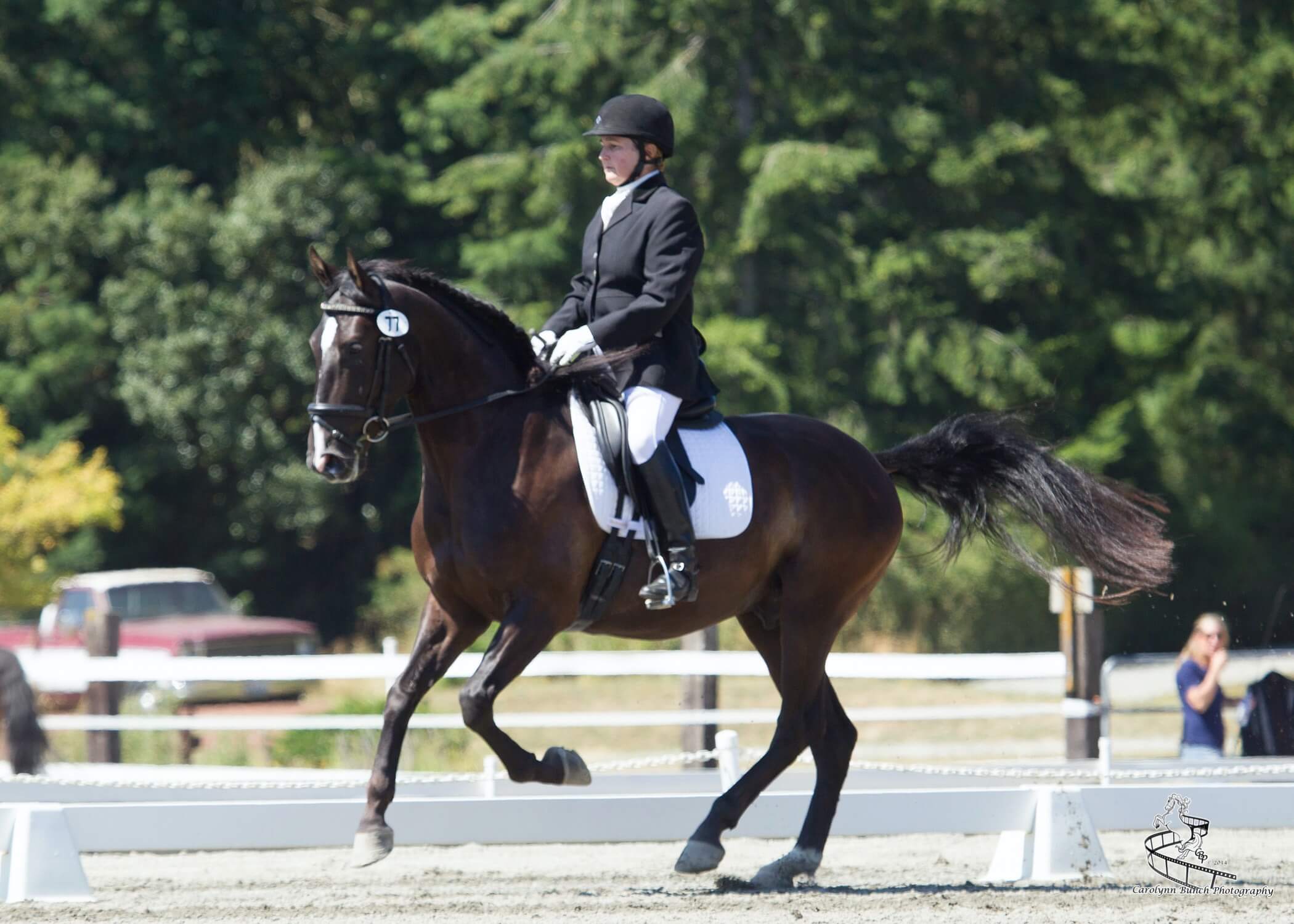
Kim Roe grew up riding on the family ranch and competed in Western rail classes, trail horse, reining, working cow, and hunter/jumper. She trained her first horse for money at 12 years old, starting a pony for a neighbor.
Kim has been a professional dressage instructor in Washington state for over 30 years, training hundreds of horses and students through the levels. In recent years Kim has become involved in Working Equitation and is a small ‘r’ Working Equitation judge with WE United.
Kim is the editor of the Northwest Horse Source Magazine, and also a writer, photographer, and poet. She owns and manages Blue Gate Farm in Deming, Washington where she continues to be passionate about helping horses and riders in many disciplines.





